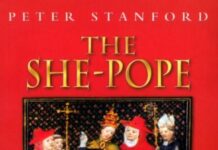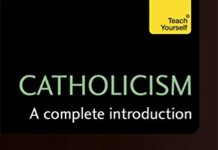
Ebook Info
- Published: 2007
- Number of pages: 390 pages
- Format: PDF
- File Size: 16.17 MB
- Authors: Peter Stanford
Description
How unfair’, wrote one national newspaper in 1951, ‘that accomplishments enough to satisfy the pride of six men should be united in Mr Day-Lewis.’ Poet, translator of classical texts, novelist, detective writer (under the pen-name Nicholas Blake), performer and, at that time, Professor of Poetry at Oxford, C Day-Lewis had many careers all at once. This first authorised biography tells the private story behind the many headlines that this handsome, charming Anglo-Irish Poet Laureate generated in his lifetime.With unparalleled access to Day-Lewis’s archives and the recollections of first-hand witnesses, Peter Stanford traces the link between life and art to reassess the work of a poet lauded in his lifetime but whose literary reputation has latterly become a matter of controversy with Westminster Abbey refusing him the place in Poets’ Corner traditionally allotted to Poets Laureate.Day-Lewis first made his name as one of the ‘poets of the thirties’, launching a communist-influenced poetic revolution alongside WH Auden and Stephen Spender that aspired to spark wholesale political change to face down fascism.In the 1940s, ‘Red Cecil’, as he had become known, broke with communism and Auden and went on to produce some of his most popular and enduring verse, prompted by his long love affair with the novelist, Rosamond Lehmann. Torn between her and his wife, he reflected on his double life in verse and became for some the supreme poet of the divided heart. Later, with his second wife, the actress Jill Balcon, he promoted poetry with a series of popular recitals and radio and television programmes. Together, they had two children, Tamasin and Daniel, later an Oscar-winning actor. Day-Lewis was always pulled between a fulfilling domestic life and a restless desire to explore. His travels, his exploration of his Irish roots and his infidelities are all part of the rich and many-faceted life that Peter Stanford describes. It is, however, as a poet that he is best remembered, and the poetry itself, often autobiographical, forms an integral part of this intriguing and long-overdue biography.
User’s Reviews
Reviews from Amazon users which were colected at the time this book was published on the website:
⭐I realize Stanford book’s is a “life”, not a “critical biography”, but it’s clearly unsatisfactory.He does give you the “facts” about Day-Lewis life and times, but makes no serious attempt to define his character beyond a few fleeting apercus, most of which are dubious and pedestrian.For example, he never considers that Day-Lewis was a sex addict, a likelihood that even a reader of Day-Lewis’ detective yarns could intuit. His mistreatment of the women in his life was constant, and you wonder why they put up with such an inconstant lover.He also exaggerates Day-Lewis poetical standing. He stood In the shadow of Auden, which Stanford does suggest, but how far Auden outstripped him is understated. Is there one poem by Day-Lewis that comes to mind when ordinary literate readers hear his name? THE MAGNETIC MOUNTAIN may have garnered praise by contemporary critics, but it’s forgotten now by all except scholars of British poetry of the 1930s.Stanford quotes a lot of Day-Lewis’ poetry, but in most cases he does so to shore up a point he’s making about a person or event in Day-Lewis’ life. It’s as if Stanford thinks of the poetry as a kind of diary that’s not written in prose. Again, he’s not writing a “critical biography”, but that’s more reason to use the poetry sparingly as biographical material; correspondence and references to Day-Lewis in the books of his contemporaries would describe his “life” better than tendentious readings of his poems.It’s ironic that Stanford has very little to say about Day-Lewis’ career as “Nicholas Blake”, because his Nigel Strangeways mysteries are clearly the books for which he’s best remembered. The majority of these so-called “potboilers” are among the best classic crime novels ever written, certainly on the same level as those of Cyril Hare, Agatha Christie, Dorothy Sayers, and etc.What puzzles me about the author is that he seems to have no special background to write the biography of a poet. All the other books he’s written are on religion, according to the jacket bio. Given that Day-Lewis was a lifelong atheist, it’s ironic that the author of a book called CATHOLICS AND SEX would be his biographer,Stanford’s prose style is commonplace. As you pursue the “facts” about Day-Lewis he’s offering, you have to stifle quite a few yawns and your eyelids growing heavy.Finally, and I hope this won’t seem a little below the belt, there isn’t one review blurb, positive or negative, on the dust jacket, though there’s a quote from John Betjeman about Day-Lewis, a compliment written or stated after he succeeded Day-Lewis as Poet Laureate.Day-Lewis deserves a much better biography, though I doubt he’ll get one,
⭐The British poets of the 1930s were sometimes known collectively as MacSpaunday (Louis MacNeice, Stephen Spender, W. H. Auden, and Cecil Day-Lewis). You don’t hear much about them anymore, except perhaps Auden, who was always acknowledged in some way as the “leader” of this loosely affiliated group. C. Day-Lewis, however, deserves to be known as a poet as well as the father of a son (Daniel Day-Lewis) who is one of the best actors of his generation and the father of a daughter (Tamasin Day-Lewis) who writes great British cookbooks! This thorough and readable biography is a great supplement to reading his poems.Having said that, the biography doesn’t really catch fire until halfway through, after you’ve passed through Day-Lewis’s youthful commitment to Communism (like so many Western intellectuals of the 1930s) and his entrenched but incompatible first marriage which resulted in two sons. His long-lasting affair with writer Rosamond Lehmann and his eventual second marriage to the actress Jill Balcon (mother of the aforementioned Daniel and Tamasin) make for absorbing reading. Like other British poets (Robert Graves and Ted Hughes come to mind), Day-Lewis did not consider an enduring and happy marriage to a bright, lovely, and much younger woman a reason to rule out serial adultery. Does poetic inspiration require finding new objects of sexual desire at regular intervals? These men obviously found it so. Interestingly enough, Day-Lewis’s most beloved poem is not one dealing with the ephemeral longing of romantic lust — rather, it is “Walking Away”, written after he waved his son off at school. The last stanza reads (in words that any parent can recognize and agree with, even in tears):I have had worse partings, but none that soGnaws at my mind still. Perhaps it is roughlySaying what God alone could perfectly show –How selfhood begins with a walking away,And love is proved in the letting go.I knocked one star off this review because there is a bit of dryness in this biography — almost an imitation of Day-Lewis’s own detachment — which contrasts with the enveloping flow of other classic biographies on close associates of Day-Lewis (such as the one on Rosamond Lehmann by Selina Hastings and the one on writer Laurie Lee by Valerie Grove). Still, this book is eminently readable and recommended.
⭐very good deep biography of this enigmatic figure
⭐a concise and interesting biography that is detailed and well researched. Some more photographs of his life could have been useful.
⭐This was a mistaken order – I thought it was Day-Lewis’ poetry. It seemed to be a detailed biography but not very gripping. Prompt delivery and reasonable condition
Keywords
Free Download C Day-Lewis: A Life in PDF format
C Day-Lewis: A Life PDF Free Download
Download C Day-Lewis: A Life 2007 PDF Free
C Day-Lewis: A Life 2007 PDF Free Download
Download C Day-Lewis: A Life PDF
Free Download Ebook C Day-Lewis: A Life



